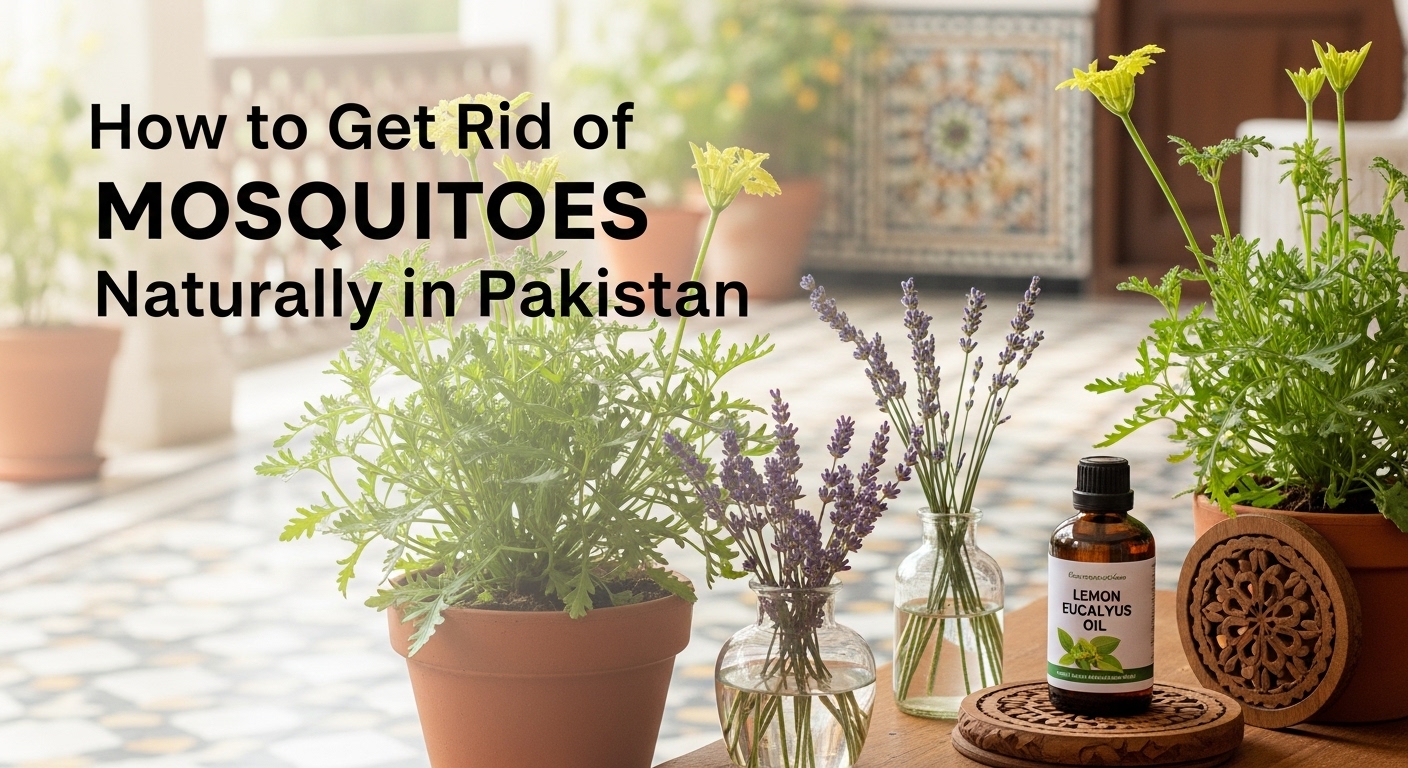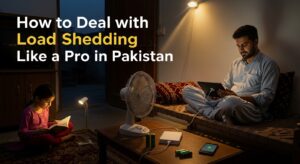Mosquitoes are more than just a nuisance in Pakistan; they are a real health concern, especially with the prevalence of diseases like dengue fever and malaria. While chemical solutions are available, many people prefer natural methods to protect their homes and families, minimizing exposure to harsh chemicals to get rid of mosquitoes. This guide will walk you through practical, effective, and natural ways to keep those buzzing invaders at bay, tailored specifically for the Pakistani context.
We’ll cover everything from simple household practices to leveraging the power of plants, helping you create a mosquito-free environment using methods that are safe and sustainable. Let’s get started on reclaiming your space from these tiny pests.
Understanding the Enemy: Why Mosquitoes Thrive in Pakistan
Before we dive into solutions, it’s helpful to understand why mosquitoes are such a persistent problem here. Pakistan’s warm climate, especially during and after monsoon seasons, provides ideal breeding conditions for mosquitoes. They love stagnant water and humid environments. Knowing this helps us target our efforts effectively.
Common mosquito species you’ll encounter include Aedes aegypti and Aedes albopictus (dengue carriers), Anopheles species (malaria carriers), and Culex species (which can transmit other diseases and are common nuisances). Each has slightly different habits, but the core natural prevention strategies work against all of them.
Step 1: Eliminate Breeding Grounds – The First Line of Defense
The most crucial step in natural mosquito control is to stop them from breeding in the first place. Mosquitoes lay their eggs in standing water, and it only takes a small amount for them to multiply rapidly.
| Action | Why | How |
|---|---|---|
| Empty and Clean Water Containers Weekly | Even a bottle cap filled with water can be a breeding ground. Emptying disrupts egg laying and larval development. | Tip out water, scrub inside to remove eggs, and let dry before refilling or storing. Do at least once a week. |
| Check and Clear Roof Gutters | Often out of sight, making them easy to forget as breeding spots. | Inspect gutters regularly, especially after rain, and remove leaves, dirt, or debris. |
| Maintain Water Storage Tanks | If not sealed or maintained, they become major breeding sites. | Ensure tight-fitting lids, seal cracks/gaps, and clean regularly per health guidelines. |
| Address Water Accumulation in Gardens and Yards | Provide continuous breeding opportunities. | Fill in lawn or garden depressions, change bird bath water every 2–3 days, add fish to ponds to eat larvae. |
| Properly Dispose of Waste | Overlooked items contribute significantly to mosquito populations in urban and peri-urban areas. | Bag and dispose of garbage properly, join community clean-up drives before and during monsoon season. |
Step 2: Create Natural Barriers and Deterrents
Once you’ve tackled breeding, the next step is to make your home less inviting for mosquitoes. This involves using physical barriers and natural scents they dislike.
| Action | Why | How |
|---|---|---|
| Install and Maintain Window and Door Screens (Jali) | One of the most effective physical barriers, allowing fresh air in while keeping mosquitoes out. | Ensure all screens are intact without tears or holes. Repair or replace damaged ones promptly. Doors and windows should close tightly with no gaps. Many local hardware stores in Pakistan offer jali installation services. |
| Use Mosquito Nets (Machardani) | Provides a direct physical barrier during sleep, especially for children and the elderly. Highly recommended during dengue season. | Tuck the net securely under the mattress or around the sleeping area so no gaps remain. Inspect regularly for holes. |
| Strategic Use of Fans | Mosquitoes are weak fliers; strong airflow makes it hard for them to fly and land, effectively pushing them away. | Keep fans on in living areas and bedrooms during peak mosquito hours (dawn, dusk, and night). |
| Block Entry Points at Dusk | Mosquitoes are most active during dawn and dusk, making this a critical period to prevent entry. | Close all windows and doors before sunset and keep shut until after sunrise. For ventilation, use well-maintained screens. |
| Limit Outdoor Lighting | Bright lights attract insects that mosquitoes prey on; yellow lights are less attractive to many insects. | Turn off unnecessary outdoor lights near entryways. Use yellow LED “bug” lights for necessary outdoor lighting. |
Step 3: Embrace Nature’s Repellents – Plants and Essential Oils
Many plants contain natural compounds that mosquitoes find unpleasant. You can harness these in various ways to create a more mosquito-unfriendly environment.
| Action | Why | How |
|---|---|---|
| Plant Citronella Grass | Contains citronella oil, a natural mosquito repellent. | Plant in garden beds or large pots near windows, doors, and sitting areas. Crush leaves gently to release scent. |
| Plant Neem (Nim) Tree | Neem oil contains azadirachtin, a natural insecticide and repellent. | Plant in yard if space allows. Spray diluted neem oil around home for added effect. |
| Plant Basil (Tulsi/Rehan) | Strong aroma repels mosquitoes; Holy Basil (Tulsi) is particularly effective. | Grow in pots on window sills, kitchen gardens, or near entrances. |
| Plant Mint (Podina) | Mosquitoes dislike strong menthol smell. | Plant in pots or garden beds. Crush leaves and rub on skin for temporary relief. |
| Plant Marigolds (Genda Phool) | Contain pyrethrum, used in commercial insect repellents. | Plant in beds, especially along house perimeter or near entry points. |
| Plant Lemon Grass | Contains citronella, effective in repelling mosquitoes. | Grow in pots or garden beds. Brush against it to release aroma. |
| Use Lemon Eucalyptus Oil | One of the most effective natural repellents. | Mix with carrier oil and apply to skin, or dilute with water as a spray. Test before use. |
| Use Citronella Oil | Strong citrus scent masks scents that attract mosquitoes. | Use in diffusers, make candles, or dilute for outdoor sprays. |
| Use Lavender Oil | Repels mosquitoes and soothes bites. | Apply to pulse points or clothing, or diffuse indoors. |
| Use Neem Oil | Repels mosquitoes and disrupts breeding/feeding. | Dilute 1:10 with carrier oil before applying to skin. Strong smell. |
| Use Peppermint Oil | Repels mosquitoes due to intense aroma. | Dilute with water and spray surfaces, or use in a diffuser. |
| Use Cinnamon Oil | Can kill mosquito eggs and repel adults. | Mix 1/4 tsp with 4 oz water and spray surfaces. Avoid direct skin contact in concentrated form. |
Step 4: Homemade Remedies to Get Rid of Mosquitoes
Beyond plants and oils, simple household items can also be repurposed to deter or trap mosquitoes.
| Action | Why | How |
|---|---|---|
| Garlic Spray | Mosquitoes despise the strong scent of garlic. | Boil a few crushed garlic cloves in water, cool, strain, and pour into a spray bottle. Spray in dark corners or entryways. Smell fades for humans but remains for mosquitoes. |
| Lemon and Cloves | Combination of citrus and clove scent is a powerful deterrent. | Cut a lemon in half, stick several whole cloves into the cut side, and place in bowls near windows or beds. Replace every few days. |
| Coffee Grounds | Attract mosquito eggs to surface of water, depriving them of oxygen. | Sprinkle into stagnant water that cannot be removed (e.g., drains, ponds) to kill larvae. |
| Dish Soap Trap | Mosquitoes are attracted to water, but soap causes them to drown. | Place bowl of soapy water in mosquito-prone rooms. Works best indoors. |
| Camphor | Emits a strong scent that repels mosquitoes. | Light small piece in a heat-safe container, close room for 15–20 minutes, then ventilate. Use sparingly. |
| Burning Rosemary or Sage | Smoke and scent from burning repel mosquitoes. | Burn small bunch in outdoor area or well-ventilated indoor space. Smoke acts as a natural fumigant. |
Step 5: Personal Protection – Keeping Them Off You
Even with all these measures, some mosquitoes might still find their way in. Personal protection is key, especially during peak mosquito activity.
| Action | Why | How |
|---|---|---|
| Wear Appropriate Clothing | Covers more skin, reducing bite area; light colors attract fewer mosquitoes. | Choose lightweight, breathable fabrics like cotton for comfort in warm climates. |
| Apply Natural Repellents to Skin | Creates a scent barrier mosquitoes avoid. | Dilute oils (lemon eucalyptus, citronella, lavender, neem, peppermint) with carrier oil or water, patch test, and apply to exposed skin. Reapply as needed. |
| Avoid Peak Mosquito Hours Outdoors | Aedes mosquitoes (dengue carriers) are most active then. | Schedule outdoor chores and gatherings for midday; if outside, ensure good protection. |
| Shower Regularly | Sweat and body odor attract mosquitoes. | Shower after physical activity to reduce attractiveness to mosquitoes. |
Step 6: Community and Ongoing Efforts
Mosquito control is a collective effort. What you do in your home helps, but broader community involvement significantly impacts overall mosquito populations.
| Action | Why | How |
|---|---|---|
| Participate in Clean-up Campaigns | Tackles larger breeding grounds outside your property. | Look for announcements from local union councils, municipalities, or welfare organizations about clean-up drives. |
| Educate Your Neighbors | Awareness helps others address hidden breeding sites. | Encourage emptying water, checking gutters, and using deterrents. Share guides or tips. |
| Report Neglected Areas | Some breeding sites require municipal intervention. | Contact your city council, health department, or relevant authority to report concerns. |
| Stay Informed About Dengue and Malaria Alerts | Helps you intensify prevention when risk is highest. | Follow updates from health authorities, local government, and trusted organizations. |
Common Mistakes and How to Avoid Them
Even with the best intentions, some pitfalls can hinder your natural mosquito control efforts.
| Mistake | Details |
|---|---|
| Forgetting Hidden Water Sources | Check less obvious spots like AC trays, discarded plastic sheets, old tires, or folded tarpaulins. Any standing water, no matter how small, can breed mosquitoes. |
| Inconsistent Cleaning | Mosquito eggs can hatch quickly; weekly cleaning and inspections are essential. Occasional emptying is not enough. |
| Relying on a Single Method | No single natural method is 100% effective. Use a combination of elimination, barriers, and repellents for best results. |
| Ignoring Community Efforts | Even with a clean home, nearby breeding sites can pose a risk. Engage in or advocate for community clean-up drives. |
| Over-reliance on Plant Repellents | Plant effects are localized; don’t expect one plant to protect a whole area. Use alongside other methods. |
| Not Diluting Essential Oils | Applying concentrated oils directly can cause irritation. Always dilute with a carrier oil before applying to skin. |
Conclusion: A Sustainable, Healthy Home
Getting rid of mosquitoes naturally in Pakistan is a continuous process, but it’s entirely achievable with consistent effort and a bit of knowledge. By focusing on eliminating breeding grounds, utilizing natural barriers, embracing the power of plants and essential oils, and practicing personal protection, you can significantly reduce mosquito populations around your home.
Remember, a healthier, mosquito-free environment is not just about comfort; it’s about protecting your family from potentially dangerous diseases. By adopting these natural practices, you’re not only safeguarding your home but also contributing to a healthier community for everyone.
Resources
- Local nurseries and garden centers for mosquito-repelling plants (e.g., Citronella, Neem, Basil, Mint, Marigolds, Lemon Grass).
- Pharmacies and herbal stores for essential oils (e.g., Lemon Eucalyptus Oil, Citronella Oil, Lavender Oil, Neem Oil, Peppermint Oil, Cinnamon Oil) and camphor.
- Hardware stores and general stores for mosquito nets, window/door screens, and fan installations.
- Local municipal corporations or health departments for public health advisories and community clean-up initiatives.







